Hip Flexors: The Definitive Guide.
Posted by Paul Zaichik on

Learn what to do. What to avoid doing. And How to properly stretch your Hip Flexors
Hip flexors, Everything you wanted to know about the Hip Flexors. We get questions about the hip flexors quite often so we've decided to put together all the questions and answers about the hip flexors and all the information about them. In this guide you will learn what you need to do for your hip flexors. What you should avoid doing when stretching your hip flexors. And How to stretch your hip flexors properly. You will also learn what hip flexors are, Kinesiology of the hip flexors, what causes tightness in the hip flexors, symptoms of tight hip flexors, and much more!
What are the hip flexors?
Hip flexors are six muscles which all collectively flex the hip joint. To flex a hip joint means that in a standing position, you lift your knee up and forward. Of course, this movement can be performed lying down, sitting, being on the side or in any other position, as long as the angle between the pelvis and the femur decreases. That is a function of the hip.
Kinesiology of Hip Flexors
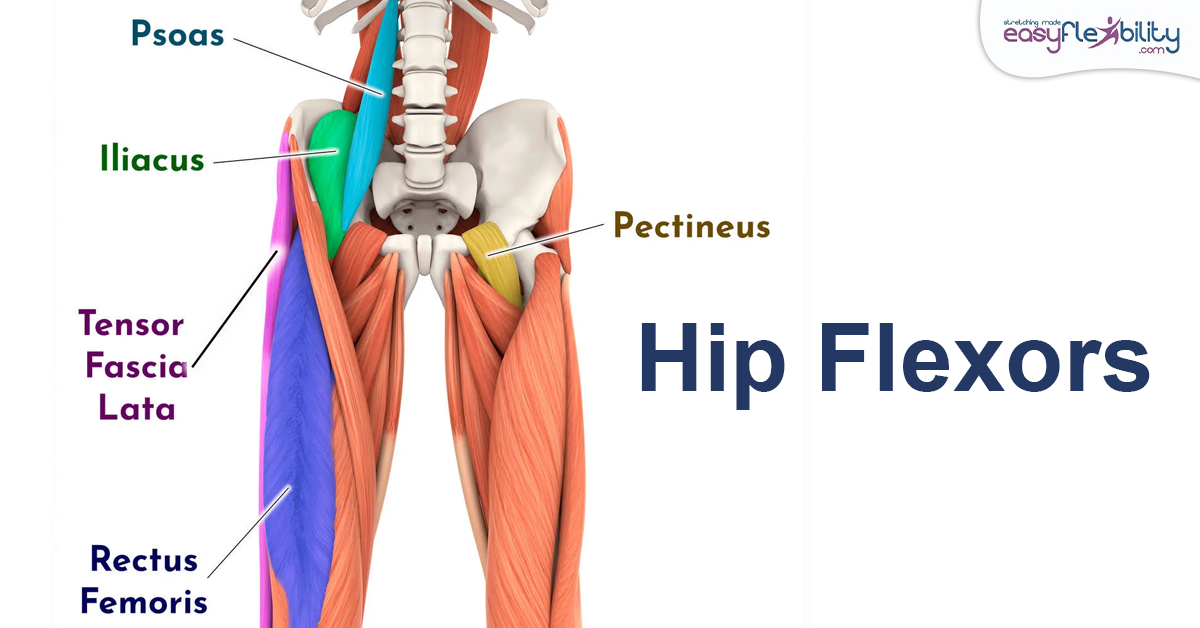
There are six hip flexors. They are:
- Pectineus
- Tensor Fasciae Latae
- Rectos Femoris
- Sartorius
- Soleus
- Iliacus
There are six muscles that are named hip flexors, although hip flexors are not the only muscles that flex a hip. Adductors flex the hips as well. The hip flexors are generally divided into two groups, short and long.
The short hip flexors are Psoas and Iliacus, and together they are called Iliopsoas and Pectineus. These hip flexors are called short hip flexors because they only work on the hip joint and not on the knee joint. Although Psoas works on the spinal joints as well.
The three long hip flexors are Rectus femoris, Sartorius and Tensor fasciae latae. While Rectus femoris and Sartorius actually cross the knee through the tendons, which are short tendons, Tensor fasciae latae is a short muscle and its action on the knee is through the iliotibial track. However, it's still usually considered a long hip flexor although I've seen some texts which group it together with short hip flexors.
The short hip flexors are Psoas and Iliacus, and together they are called Iliopsoas and Pectineus. These hip flexors are called short hip flexors because they only work on the hip joint and not on the knee joint. Although Psoas works on the spinal joints as well.
The three long hip flexors are Rectus femoris, Sartorius and Tensor fasciae latae. While Rectus femoris and Sartorius actually cross the knee through the tendons, which are short tendons, Tensor fasciae latae is a short muscle and its action on the knee is through the iliotibial track. However, it's still usually considered a long hip flexor although I've seen some texts which group it together with short hip flexors.
Muscle Actions of Hip Flexors
Muscle actions, It is very important to understand the muscle actions, especially if you are a student of EasyFlexibility system. Because each muscle does something different. And the reason that Easyflexibility's Zaichik Stretching Techniques are able to isolate each muscle and target individual muscles is because each one does something else. And we talk about this in-depth in EFTC Instructor Certification Course.
- Pectineus: Let's start with the short hip flexors Pectineus. Pectineus muscle flexes the hip, abducts the hip horizontally, adducts the hip and medially rotates the hip.
- Psoas: Psoas is a very strong flexor of the hip, a weak adductor and also a weak lateral rotator of the hip. At the same time, this muscle is able to hyper extend the spinal column and laterally flex the spinal column.
- Iliacus: Iliacus does the same thing as Psoas minus the spinal column. So it flexes the hip, assists in adduction and lateral rotation of the hip.
- Tensor fasciae latae: Tensor fasciae latae has a lot of similarities to the Pectineus in terms of how it is stretched from the EasyFlexibility point of view, and there's a lot of confusion between the two. You can look at this article that explains the confusion. Tensor fasciae latae flexes the hip, abducts the hip and medially rotates the hip. Pectineus does the same thing except for Pectineus adducts and Tensor fasciae latae abducts at the same time. Tensor fasciae latae helps the knee to be extended through the iliotibial track, and thus it is best to work on it with knee bent.
- Sartorius: Sartorius is the longest muscle in the body. It is a hip flexor. It Flexes the hip, laterally rotates the hip, helps in abduction of the hip. At the same time, it flexes the knee and medially rotates the knee.
- Rectus femoris: Rectus femoris is a flexor of the hip. Extensor of the knee. Weak lateral rotator and weak abductor of the hip. It's worth mentioning that if your goal is to stretch your hip flexors, you must stretch the adductors as well or they will get in the way. Because like I said above, they also flex the hip. We wrote an article on adductors which you can read by clicking here.
What causes tightness in the hip flexors?
There are several different causes for tightness in the hip flexors. For a lot of people, it is the position. The muscles get used to a position. They get used to being stretched. And they also get used to being shortened.
Sitting for a long time gets the body to understand that this is the length that the muscles should be in, and the hip flexors shorten. Usually not all hip flexors shorten at the same time. For example, Psoas might shorten quite a lot, but not other hip flexors, depending on how you sit and what you do.
And that is why, if it is only one specific muscle that is bothering you, it is best to isolate it and stretch it separately from other muscles. Zaichik Stretching Techniques do exactly this, isolate muscles one at a time.
Another reason for tightness in the hip flexors is using muscles in the short ranges. For example, doing a lot of sit ups, hanging leg lifts and all kinds of isometric contractions where the hip flexors are shortened. Such as for example, doing a lot of L seats and V seats without doing anything to extend the hip, just to flex the hip, eventually the hip flexors will begin to get accustomed to that short position and tighten up. Injury, surgery, scar tissue, inflammation, even trapped emotions can get your hip flexors to tighten. Weak or injured joints may force your muscle to adjust its position to protect the joint and eventually tighten up as well.
Sitting for a long time gets the body to understand that this is the length that the muscles should be in, and the hip flexors shorten. Usually not all hip flexors shorten at the same time. For example, Psoas might shorten quite a lot, but not other hip flexors, depending on how you sit and what you do.
And that is why, if it is only one specific muscle that is bothering you, it is best to isolate it and stretch it separately from other muscles. Zaichik Stretching Techniques do exactly this, isolate muscles one at a time.
Another reason for tightness in the hip flexors is using muscles in the short ranges. For example, doing a lot of sit ups, hanging leg lifts and all kinds of isometric contractions where the hip flexors are shortened. Such as for example, doing a lot of L seats and V seats without doing anything to extend the hip, just to flex the hip, eventually the hip flexors will begin to get accustomed to that short position and tighten up. Injury, surgery, scar tissue, inflammation, even trapped emotions can get your hip flexors to tighten. Weak or injured joints may force your muscle to adjust its position to protect the joint and eventually tighten up as well.
You can try a unique Zaichik Stretching Technique for Psoas Stretch Release right now!
To perform this Zaichik Stretching Technique:
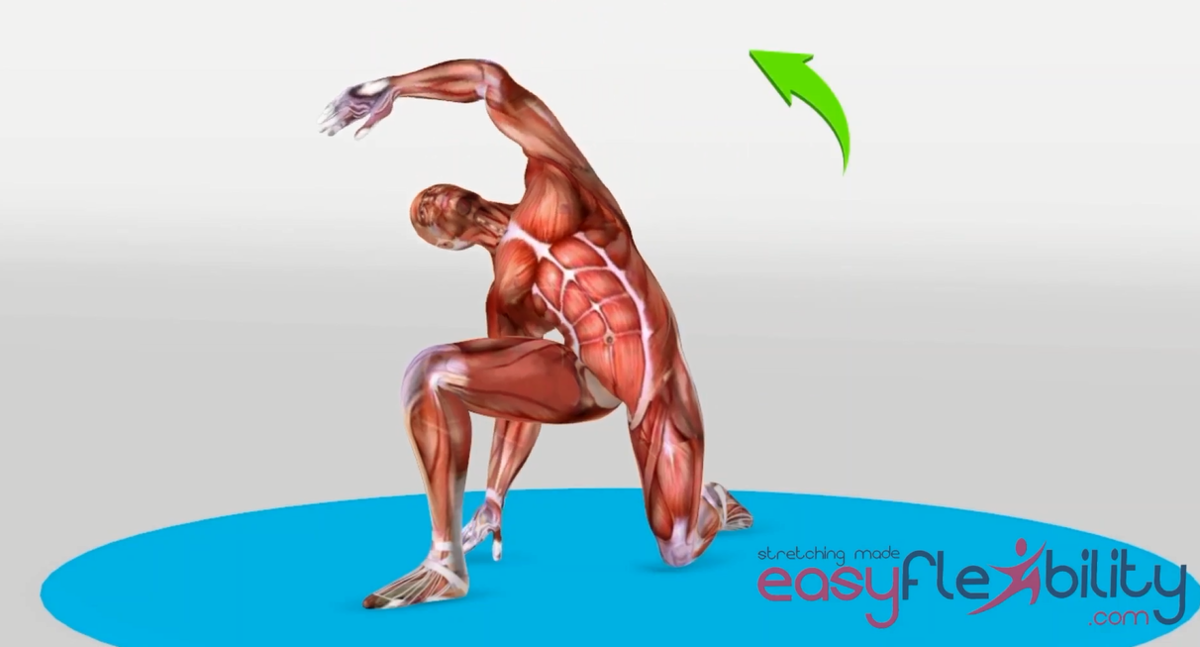
Starting Position
- Get into a lunge.
- Move front leg to the side.
- Bring right arm up.
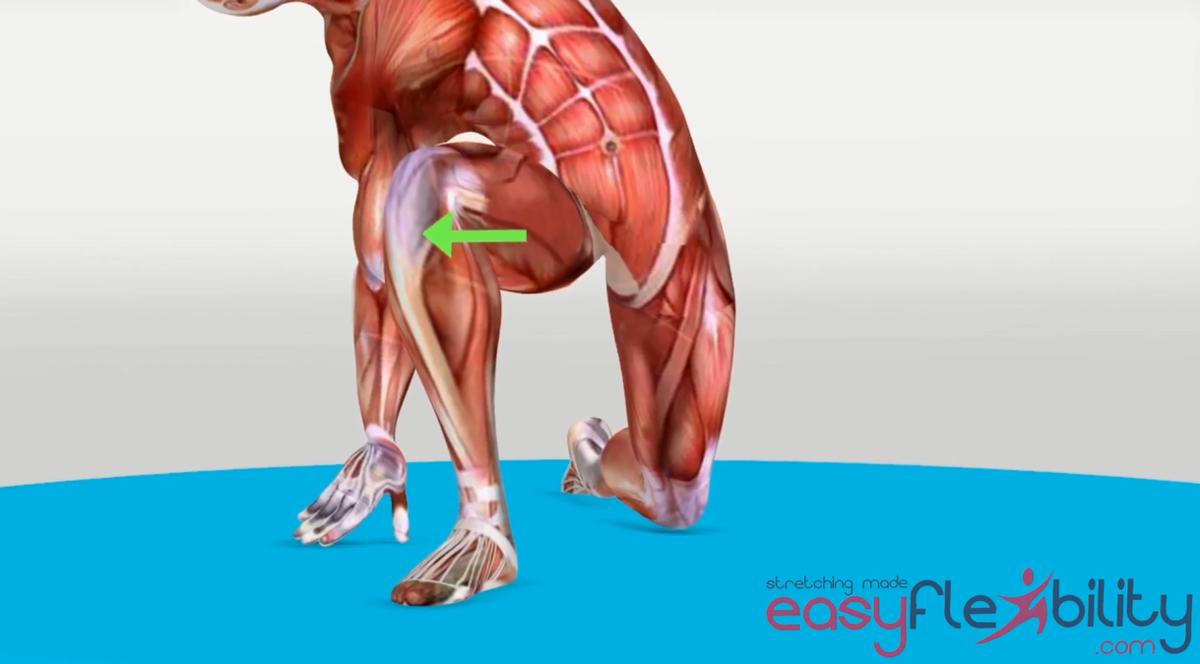
1st Leverage:
Shift hip to the side for a second.
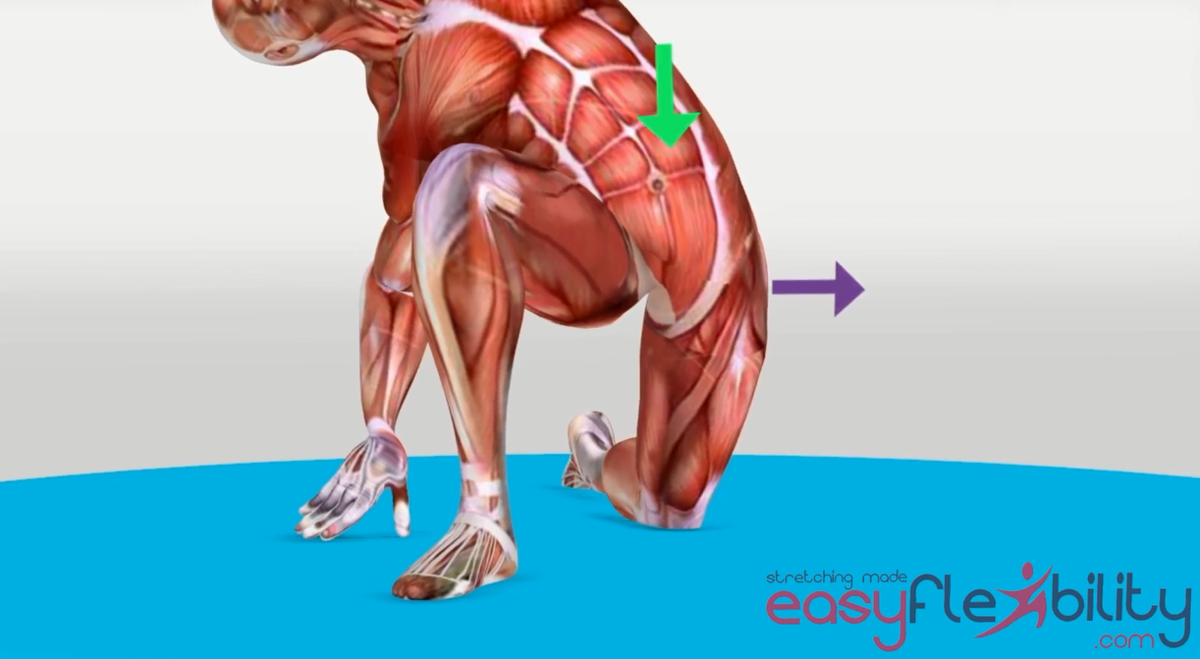
1st Target:
Come back and go deep forward.
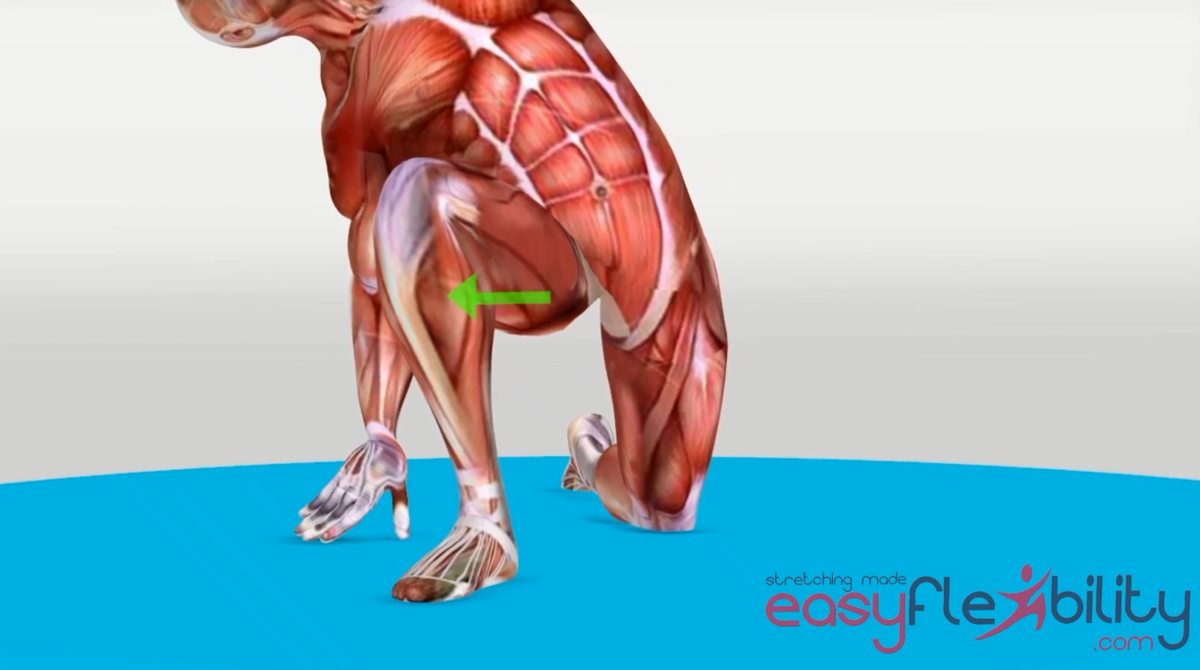
2nd Leverage:
Move to the side again.

2nd Target:
Come back and go deeper.

3rd Leverage:
Move to the side one more time.

3rd Target:
Come back and go deeper.
Symptoms of tight Hip Flexors.
The symptoms of tight hip flexors may vary, because, there are multiple hip flexors and sometimes, if there is pain, it can radiate to other parts of the body. In general, testing the flexibility of the hip flexors and seeing the tightness would be one of the symptoms.
Weak hip extensors, primarily weak glutes, but also weak Adductor magnus ischial fibers can be a symptom of tight hip flexors. In other words, the antagonist muscles are inhibited by reciprocal inhibition, being unable to extend the leg completely while sitting or standing. A lot of people don't quite understand this symptom, but if you were to lie down on your back and extend both legs with your feet vertically, you might see one leg extending more than the other. Which brings us to tight hip flexors test.
Weak hip extensors, primarily weak glutes, but also weak Adductor magnus ischial fibers can be a symptom of tight hip flexors. In other words, the antagonist muscles are inhibited by reciprocal inhibition, being unable to extend the leg completely while sitting or standing. A lot of people don't quite understand this symptom, but if you were to lie down on your back and extend both legs with your feet vertically, you might see one leg extending more than the other. Which brings us to tight hip flexors test.
Tight Hip Flexors Test
Tight hip flexor test is really a weird term because if you are testing the ability of your hip joint to extend you have to figure out what is tight. Is it the nerve? Is it the hip joint? Is it your hip flexors? Is it your adductors? Are you unable to extend it passively or actively?
And if indeed this is your hip flexors, which one is it? Knowing simply the fact that you cannot extend your hip, doesn't necessarily mean that it is your hip flexors. It can be, but does not 100% mean that it is. And if it is, you must be able to add other actions such as adduction of the hip, abduction of the hip, internal rotation of the hip, external rotation of the hip, whether the knee is flexed or not, and which position your spine is in, to really test which hip flexor is at fault. So that you can target the one hip flexor specifically. In the EasyFlexibility system we know how to isolate each of the hip flexors and have created a program specifically for hip flexors which you can learn more about here.
And if indeed this is your hip flexors, which one is it? Knowing simply the fact that you cannot extend your hip, doesn't necessarily mean that it is your hip flexors. It can be, but does not 100% mean that it is. And if it is, you must be able to add other actions such as adduction of the hip, abduction of the hip, internal rotation of the hip, external rotation of the hip, whether the knee is flexed or not, and which position your spine is in, to really test which hip flexor is at fault. So that you can target the one hip flexor specifically. In the EasyFlexibility system we know how to isolate each of the hip flexors and have created a program specifically for hip flexors which you can learn more about here.
Hip Flexors Flexibility & Strength Basic Level Program
This program focuses on general anatomic hip extension flexibility. This means the movement of the hip in purely sagital plane. No actions in coronal or transverse plane take place. Each of the hip flexors is adressed separately together with other muscle groups, which can restrict hip extension.
Is walking good for tight hip flexors?
Walking, absolutely is a good exercise, especially in fresh air. However, depending on the cause of the hip flexor tightness, if you have very tight hip flexors, you might simply cause an injury to yourself. If you're trying to use walking as a method to stretch your hip flexors or lengthen the hip flexors.
If, on the other hand you are trying to prevent your hip flexors from being tight. You don't have tight hip flexors yet. And you sit at the desk, and you walk around a little bit so that your hip flexors are in a more lengthened position than sitting, as a way to prevent them from tightening up. Then, yes, it's a good way to balance out the short length activity with normal length activity. But walking is not an extended length activity for the hip flexors in its normal length.
Additionally, walking has less chances of tightening up your hip flexors than if your repetitive motion activity would have been something that requires the hip flexors to stay in a tight position. Such as biking or rowing exercises for tight hip flexors that are not stretching. Strength exercises should always be combined with stretching exercises and every EasyFlexibility program has these combinations.
So in addition to stretching exercises, hip flexors should be strengthened in the long ranges and antagonist muscles should be strengthened in the short ranges. For example, a lunge stance with a back leg straight with an isometric exercise to strengthen the hip flexors in the long range. And going up the stairs. It's a short range contraction exercise for the hip flexors antagonist primarily gluteus maximus in this case.
These are general exercises, to be more specific. Rotations of the hip, horizontal flexion, extension of the hip, anatomical adduction, abduction of the hip, and movement of the spine should be included. This is to take into account a wide range of actions that the hip flexors do. At the same time, strengthening the abdominals, helps quite a bit, especially if a tight Psoas is causing hyperextension of the spine.
Thus, strengthening the hip flexors must be a multidirectional movement. It cannot be just one movement where a person is, for example, lifting knees up in a standing position. That's why some of the hip flexors work harder than others, some only work part of their fiber, and what ends up happening is the hip flexors are strengthened. But. Not equally. Not optimally. And it's only the specific movement or specific action that gets strengthened where hip flexors are part of that action. So again, in the EasyFlexibility system we take care of all this and more.
If, on the other hand you are trying to prevent your hip flexors from being tight. You don't have tight hip flexors yet. And you sit at the desk, and you walk around a little bit so that your hip flexors are in a more lengthened position than sitting, as a way to prevent them from tightening up. Then, yes, it's a good way to balance out the short length activity with normal length activity. But walking is not an extended length activity for the hip flexors in its normal length.
Additionally, walking has less chances of tightening up your hip flexors than if your repetitive motion activity would have been something that requires the hip flexors to stay in a tight position. Such as biking or rowing exercises for tight hip flexors that are not stretching. Strength exercises should always be combined with stretching exercises and every EasyFlexibility program has these combinations.
So in addition to stretching exercises, hip flexors should be strengthened in the long ranges and antagonist muscles should be strengthened in the short ranges. For example, a lunge stance with a back leg straight with an isometric exercise to strengthen the hip flexors in the long range. And going up the stairs. It's a short range contraction exercise for the hip flexors antagonist primarily gluteus maximus in this case.
These are general exercises, to be more specific. Rotations of the hip, horizontal flexion, extension of the hip, anatomical adduction, abduction of the hip, and movement of the spine should be included. This is to take into account a wide range of actions that the hip flexors do. At the same time, strengthening the abdominals, helps quite a bit, especially if a tight Psoas is causing hyperextension of the spine.
Thus, strengthening the hip flexors must be a multidirectional movement. It cannot be just one movement where a person is, for example, lifting knees up in a standing position. That's why some of the hip flexors work harder than others, some only work part of their fiber, and what ends up happening is the hip flexors are strengthened. But. Not equally. Not optimally. And it's only the specific movement or specific action that gets strengthened where hip flexors are part of that action. So again, in the EasyFlexibility system we take care of all this and more.
How to stretch the Hip Flexors.
The traditional way to stretch the hip flexors was usually one of the two ways. Either to do a kneeling or a standing lunge stretch. Or to flex the knee and do basically a quadriceps stretch by pulling the heel toward the buttock.
If you are familiar with EasyFlexibility system, you know that in EasyFlexibility the Hip Flexors Program is a very elaborate program that looks nothing like what the standard hip flexor stretches look like.
To actually stretch the hip flexors, many things need to be done. One, the pelvis must be stabilized. If the pelvis is not stabilized, it will hyperextend. Even if you're doing a basic standard lunge stretch, the pelvis will hyperextend. Because the muscles that flex the hip are a lot tighter than the ones that flex the pelvis or flex the spinal column. And the spinal column will simply move. The weakest link will move. You can stabilize the pelvis using the control of your abdominal muscles, or you can stabilize the pelvis by using the position of the other leg.
Next, before going to the hip flexors, adductors need to be taken care of. Adductors flex the hip. The four adductors, each one flexes the hip. If you have tight adductors, you can't even dream about stretching your hip flexors the standard way by trying to bring your hip joint into extension. Adductors won't let that happen.
If you are familiar with EasyFlexibility system, you know that in EasyFlexibility the Hip Flexors Program is a very elaborate program that looks nothing like what the standard hip flexor stretches look like.
To actually stretch the hip flexors, many things need to be done. One, the pelvis must be stabilized. If the pelvis is not stabilized, it will hyperextend. Even if you're doing a basic standard lunge stretch, the pelvis will hyperextend. Because the muscles that flex the hip are a lot tighter than the ones that flex the pelvis or flex the spinal column. And the spinal column will simply move. The weakest link will move. You can stabilize the pelvis using the control of your abdominal muscles, or you can stabilize the pelvis by using the position of the other leg.
Next, before going to the hip flexors, adductors need to be taken care of. Adductors flex the hip. The four adductors, each one flexes the hip. If you have tight adductors, you can't even dream about stretching your hip flexors the standard way by trying to bring your hip joint into extension. Adductors won't let that happen.
Adductors Strength & Flexibility
Online On-Demand Flexibility & Strength Training Program
This program will help you to improve your adductors strength and flexibility, safely, painlessly and quickly with the use of the Proprietary Zaichik Stretching Techniques and Supporting Exercises.
Next is the multi resistance phenomenon. We're trying to stretch all six hip flexors at the same time. And one is tight. First, it would not let you stretch the other ones. If you are doing a standard stretch. And second, usually when one muscle hurts, other muscles try to protect it.
For example, if you have a tight Psoas, and you begin to stretch it, especially forcefully, other muscles will try to protect it. That's one option. The other option, you might move the wrong joint in order to keep the Psoas tight, but get an illusion that it has been stretched. So your spine might hyperextend or you might flex your spine laterally. This way, the Psoas is not really stretching. Although it looks like it is.
Here I'm using Psoas as an example. But the body will do the same for other muscles. If you try to stretch them together and one of them is tight, painful, inflamed, or injured. So isolating them helps. And then, of course, when we talk about very tight muscles and the fact that the pelvis might move instead of the hip joint, stretching them one by one makes it a lot easier to actually lengthen them.
Again in the EasyFlexibility system, we isolate muscles one by one with a specific order. For example. To stretch Tensor fasciae latae, we need a bent knee. To stretch the Pectineus, we do not need a bent knee, but we do use a bent knee because it's easier to do that for the leverage part of the movement. But to get the knee to bend before getting to Tensor fasciae latae or Pectineus, we must go through Rectus femoris because it will extend the knee and it will be forced to extend even more so when the hip is extended.
For example, if you have a tight Psoas, and you begin to stretch it, especially forcefully, other muscles will try to protect it. That's one option. The other option, you might move the wrong joint in order to keep the Psoas tight, but get an illusion that it has been stretched. So your spine might hyperextend or you might flex your spine laterally. This way, the Psoas is not really stretching. Although it looks like it is.
Here I'm using Psoas as an example. But the body will do the same for other muscles. If you try to stretch them together and one of them is tight, painful, inflamed, or injured. So isolating them helps. And then, of course, when we talk about very tight muscles and the fact that the pelvis might move instead of the hip joint, stretching them one by one makes it a lot easier to actually lengthen them.
Again in the EasyFlexibility system, we isolate muscles one by one with a specific order. For example. To stretch Tensor fasciae latae, we need a bent knee. To stretch the Pectineus, we do not need a bent knee, but we do use a bent knee because it's easier to do that for the leverage part of the movement. But to get the knee to bend before getting to Tensor fasciae latae or Pectineus, we must go through Rectus femoris because it will extend the knee and it will be forced to extend even more so when the hip is extended.
Can strengthening the glutes automatically develop flexibility in the hip flexors?
This question usually comes from the people that did research on the hip flexors. To answer this question: If strengthening the glutes is combined with stretching for the hip flexors. Then strengthening the glute is a good thing. However, if you have tight hip flexors and they are inhibiting your gluteus muscle, you simply will not be able to strengthen it. It's just going to be inhibited.
And what I see frequently is that when this happens other hip extensors will struggle really hard to compensate. The hamstrings will sturggle hard to compensate. The Adductor magnus is working hard to compensate for the glute, and often these muscles are going to get sore and even injured because they try to do what they're not designed to do.
The gluteus muscle is designed to contract towards the end of the hip extension. The hamstring and the adductors are best hip extensors in other ranges. So doing something like step ups or donkey kicks and trying to strengthen the glute and thus stretch the hip flexors usually does not work.
What you'll notice is tension in the agonist of the glute or muscles that move in the same direction as the glute. And you'll notice the pelvis swinging into hyperextension, trying to compensate for the glutes’ inability to extend the hip.
Again, however, combining flexibility training with glute strengthening does work to both strengthen the glute and loosen up the hip flexors and the two types of exercises help each other. They need each other for optimal performance and for rehabilitation.
If you're interested in EasyFlexibility hip flexors program, you can take a look below.
And what I see frequently is that when this happens other hip extensors will struggle really hard to compensate. The hamstrings will sturggle hard to compensate. The Adductor magnus is working hard to compensate for the glute, and often these muscles are going to get sore and even injured because they try to do what they're not designed to do.
The gluteus muscle is designed to contract towards the end of the hip extension. The hamstring and the adductors are best hip extensors in other ranges. So doing something like step ups or donkey kicks and trying to strengthen the glute and thus stretch the hip flexors usually does not work.
What you'll notice is tension in the agonist of the glute or muscles that move in the same direction as the glute. And you'll notice the pelvis swinging into hyperextension, trying to compensate for the glutes’ inability to extend the hip.
Again, however, combining flexibility training with glute strengthening does work to both strengthen the glute and loosen up the hip flexors and the two types of exercises help each other. They need each other for optimal performance and for rehabilitation.
If you're interested in EasyFlexibility hip flexors program, you can take a look below.
Hip Flexors Basic Level
Not all hip flexors and their synergists need to be targeted the same way for every possible technique or sport. Some skills require rotation, horizontal abduction or horizontal adduction together with extension. This program targets all of them as a general hip flexors routine.
Hip Flexors Advanced Level
This program contains:
- ZSTs (Zaichik Stretching Techniques) for each of the 10 muscles that flex the hip.
- Complete Follow Along Program, just press play and do.
- Modalities: this advanced program contains modified versions of the basic ZSTs, to make them more effective and also harder that's why you need to have mastered the beginners program.

About the Author:
Paul Zaichik is an Exercise Science Expert, author of multitude of books, and the creator of Zaichik Stretching Technique (formely known as Kinesiological Stretching Technique). His speciality is flexibility training as well as body weight conditioning. His innovative method is designed to have maximum carry over into specific athletic techniques. Paul is the author of books and DVD’s on the topic of flexibility, martial arts and bodyweight training. Over the years, Paul Zaichik has worked with a variety of individuals including athletes, entertainers, and military personnel. His ElasticSteel Method of Athletic Conditioning programs, EasyFlexibility Programs and Zaichik Stretching Techniques are used world wide by both professional and amateurs with great success.
© ElasticSteel Corp., EasyFlexibility, Paul Zaichik, et. El., 2022. No part of the materials available through ElasticSteel.com, EasyFlexiiblity.com, site may be copied, photocopied, reproduced, translated or reduced to any electronic medium or machine-readable form, in whole or in part, without prior written consent of Paul Zaichik EasyFlexibility.com, Elasticsteel.com.. Any other reproduction in any form without the permission of Paul Zaichik EasyFlexibility.com, Elasticsteel.com is prohibited. All materials contained on this site are protected by United States copyright law and may not be reproduced, distributed, transmitted, displayed, published or broadcast without the prior written permission of Paul Zaichik, EasyFlexibility.com, Elasticsteel.com.
Share this post
- 0 comment
- Tags: Adductors, Ballet, Dance, hip flexibility test, hip flexion test, Hip flexors, stretching, zst exercise
0 comment











